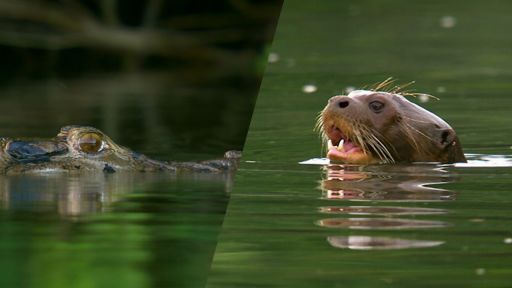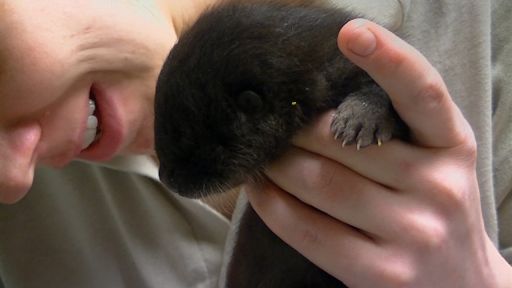The elusive, playful, and adaptable otter has the distinction of having mastered both the aquatic and terrestrial worlds. They are equally adept at hunting underwater as they are foraging and chasing prey in a forest. But they are not easy to spot, despite the fact there are 13 different species on earth. Although they’ve been hunted for sport and fur and their numbers are down, not one species has become extinct. How otters are able to operate so successfully on both land and in water has fascinated wildlife filmmaker Charlie Hamilton James for years, so he decided to see what he could learn from studying several species around the world to discover their survival secrets.
The program focuses on efforts to rehabilitate three orphaned river otters in Wisconsin, shows some ground breaking experiments using cool cameras and anatomical CGI, and captures other wild encounters.
At the Wild Instincts Wildlife Rehabilitation Center in Rhinelander, Wisconsin, Charlie is introduced to three orphan river otter pups and films their progress and training: from needing around the clock care and feeding, to being taught the crucial skills they will need in order to return to the wild. Despite the fact otters can swim nearly a quarter mile without coming up for air, baby otters do not start out as natural swimmers and they don’t really like water. So the center’s manager Mark Naniot assumes the roles of surrogate mother and teacher. Charlie films him coaxing the pups into a small pool for swimming lessons and later adding minnows which the orphans instinctively chase and catch.
The filmmakers also go to Florida Springs, Florida where a clear spring fed river provides Charlie with great conditions to capture rare shots of otters hunting underwater. At the Oakland Zoo, he films otters hunting fish in slow motion to determine how they detect and capture their prey so quickly. He also visits the Monterey Bay Aquarium’s head vet Dr. Mike Murray who explains that sea otters have the densest fur in the animal kingdom which is a key survival asset both on land and in the water.
In a film studio, high-speed, thermal and other cameras are on hand to shed light on some of the otter’s survival secrets by examining its physiology and anatomy. A thermal camera shows which parts of a sea otter retain heat and which give off heat. Its thick fur is so good at insulating itself that the camera shows little heat escaping. In another experiment, Charlie puts his theory to the test as to whether otters blow bubbles onto an item, like fish, and re-inhale it to determine if it is food or something else.
No matter which species they belong to, these inquisitive and intelligent animals all have long, highly flexible bodies, a powerful tail, and webbed feet which allow otters to live a successful semi-aquatic life.


